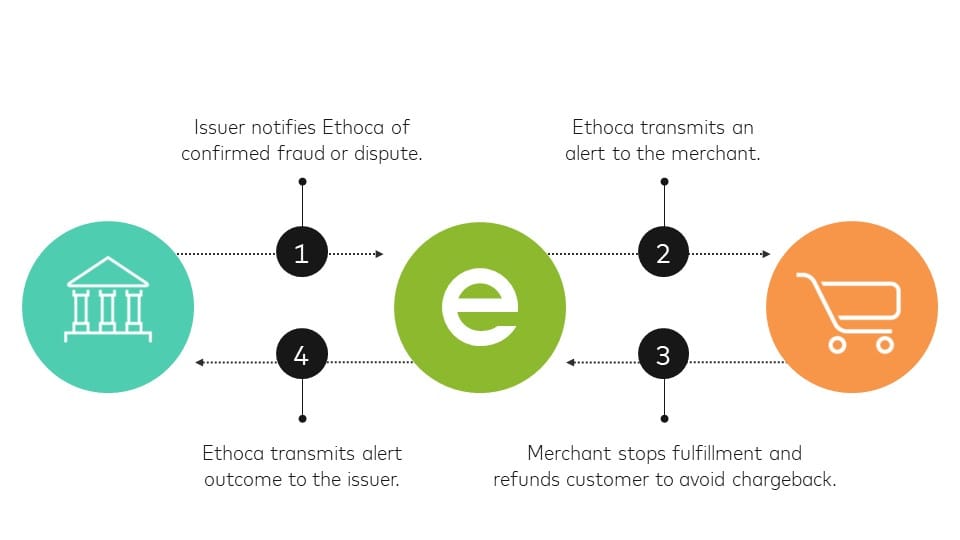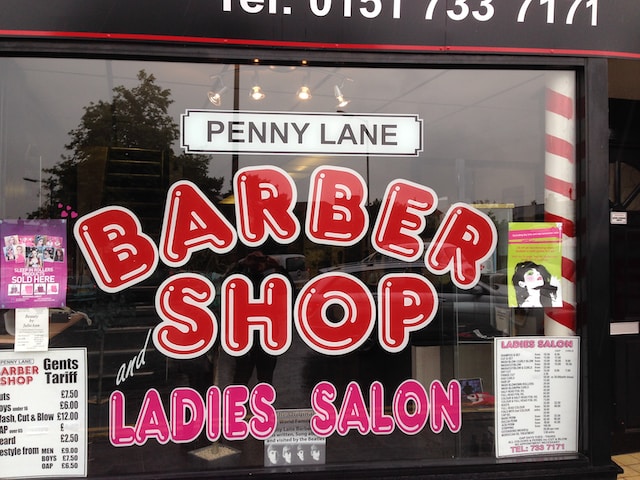
SuperPay helps barbers like yourself get paid as quickly as possible. Choose our platform to power your payments & billing.
Welcome to our blog post on Pricing Strategies for Barber Services! As a barber, understanding the importance of strategic pricing is crucial for the success and growth of your business. In this post, we will delve into the various aspects of pricing strategies to help you assess costs, analyze competition, implement effective pricing strategies, and evaluate their impact on your barber services.
Pricing your services appropriately is not just about randomly assigning a number; it requires a careful assessment of the costs involved in providing those services. We will explore the different costs you need to consider, such as overhead costs and product/service costs, to ensure that your pricing is both profitable and competitive.
Speaking of competition, it's essential to identify your competitors and analyze their pricing strategies. By understanding what your competitors are charging, you can determine your own price point and differentiate yourself from the market. We will guide you through this process, providing tips on how to conduct a competitive pricing analysis and establish a pricing strategy that works for your barber services.
Once you have identified your pricing strategy, the next step is implementation. Choosing the right pricing strategy, whether it's value-based pricing, penetration pricing, or something else, can significantly impact your profitability. We will discuss different pricing strategies and provide insights on when and how to adjust your prices based on your business goals.
But pricing doesn't end with implementation; it requires continuous evaluation and adjustment. Monitoring sales and profitability, taking client feedback, and making necessary adjustments are all part of the ongoing process. We will guide you on how to evaluate the impact of your pricing strategies on your barber services and make informed decisions to optimize your pricing structure.
Join us as we explore the world of pricing strategies for barber services. Whether you're a new barber looking to establish your pricing or an experienced professional seeking to fine-tune your strategies, this blog post will provide valuable insights to help you succeed in the competitive barbering industry. Let's get started!
Understanding the Importance of Strategic Pricing for Barber Services
Pricing is a critical aspect of any business, and the barbering industry is no exception. Understanding the importance of strategic pricing for barber services is essential for the success and profitability of your business. In this section, we will delve into why strategic pricing matters and how it can impact your barber services.
Why Strategic Pricing Matters
Maximizing Profitability: Strategic pricing allows you to set prices that maximize your profitability. By carefully assessing costs, analyzing competition, and considering market demand, you can determine the optimal price point that balances revenue generation and customer satisfaction.
Attracting and Retaining Customers: Pricing plays a significant role in attracting new customers and retaining existing ones. A well-thought-out pricing strategy can position your barber services as offering value for money, which can help you stand out in a competitive market and build a loyal customer base.
Perceived Value: Pricing can influence how customers perceive the value of your services. A higher price can create an impression of exclusivity and quality, while a lower price may suggest affordability. Strategic pricing allows you to strike the right balance and present your services in a way that aligns with your target market's expectations.
Managing Demand and Capacity: Pricing strategies can help manage demand and capacity in your barber shop. By adjusting prices during peak hours or offering discounted rates during slower periods, you can optimize your resources and ensure efficient utilization of your staff and facilities.
Adapting to Market Changes: Pricing strategies enable you to adapt to market changes and fluctuations. By closely monitoring market trends and adjusting your prices accordingly, you can remain competitive and responsive to shifts in customer preferences and economic conditions.
Impact of Pricing on Barber Services
Service Quality: The price you set for your services can influence customer expectations regarding the quality of your work. Higher prices may create the perception of premium services, while lower prices may raise concerns about the quality of your work. It's crucial to align your pricing with the quality and value you offer to ensure customer satisfaction.
Competitive Positioning: Your pricing strategy can determine how you position yourself in the market relative to your competitors. Pricing too high without justification may result in lost business, while pricing too low can undercut your profitability and devalue your services. Finding the right balance is key to establishing a competitive position in the market.
Customer Perception: Pricing can impact how customers perceive your brand and the value it delivers. A well-crafted pricing strategy that aligns with your target market's preferences can enhance your brand image and attract the right clientele. Conversely, inappropriate pricing can lead to negative perceptions and hinder business growth.
Revenue Generation: Pricing directly impacts your revenue generation. By setting prices at an optimal level, you can generate sufficient income to cover costs, invest in your business's growth, and achieve profitability. Understanding your cost structure and profit margins is crucial in determining the pricing levels needed to sustain and grow your business.
In conclusion, strategic pricing is of utmost importance for the success of your barber services. It allows you to maximize profitability, attract and retain customers, manage demand and capacity, adapt to market changes, and impact customer perceptions. By carefully considering these factors and crafting an effective pricing strategy, you can set yourself up for long-term success in the barbering industry.
Assessing Costs Involved in Barber Services
Assessing the costs involved in providing barber services is a crucial step in determining the appropriate pricing strategy for your business. Understanding the various costs and expenses associated with running a barber shop will help you calculate your overhead costs, determine the costs of your products and services, and ultimately set prices that ensure profitability. In this section, we will explore the different aspects of assessing costs involved in barber services.
Identifying Various Costs
Fixed Costs: These are expenses that remain constant regardless of the level of business activity. Examples of fixed costs in a barber shop may include rent or lease payments, insurance premiums, utilities, and equipment maintenance costs.
Variable Costs: Variable costs are expenses that fluctuate with the level of business activity. In the context of barber services, these costs may include the cost of products and supplies used during each service, commission or wages paid to staff, and marketing expenses.
Direct Costs: Direct costs are expenses directly attributable to the production of a specific service. For barbers, direct costs may include the cost of hair products, grooming tools, disposable supplies, and any other materials used during a haircut or grooming session.
Indirect Costs: Indirect costs are expenses that are not directly tied to a specific service but are necessary for the overall operation of the barber shop. This may include expenses such as administrative salaries, marketing and advertising costs, and general maintenance expenses.
Calculating Overhead Costs
To determine your overhead costs, you need to consider all the fixed and indirect costs associated with running your barber shop. Some common overhead costs to include in your calculations are:
Rent or Lease Payments: The cost of renting or leasing your barber shop space.
Utilities: Expenses related to electricity, water, and other utility services.
Insurance: Premiums for general liability insurance, property insurance, and workers' compensation insurance.
Equipment and Supplies: Costs associated with purchasing and maintaining barbering tools, furniture, and other necessary equipment.
Licenses and Permits: Fees for obtaining and renewing professional licenses and permits.
Marketing and Advertising: Expenses for promoting your barber services through various channels, such as online advertising, print media, or social media marketing.
Administrative Costs: Salaries or wages for administrative staff, accounting fees, software, and office supplies.
Determining Product and Service Costs
To accurately price your services, you need to calculate the costs specific to each service you offer. This includes both the direct costs and a portion of the overhead costs associated with providing that service. Consider the following factors:
Cost of Products and Supplies: Determine the cost of the hair products, styling gels, shaving creams, and other supplies used during each service.
Time and Labor: Estimate the time it takes for each service, including the time spent by the barber and any assistants. Factor in the wages or commissions paid to staff.
Allocation of Overhead Costs: Allocate a portion of your overhead costs to each service based on factors like the duration of the service, the number of clients served, or the revenue generated.
By accurately assessing your costs, you can better understand the financial implications of your services and determine the pricing that ensures profitability while remaining competitive in the market. In the next section, we will explore how to analyze the pricing strategies of your competitors to further refine your pricing decisions.

Competitive Pricing Analysis for Barber Services
Analyzing the pricing strategies of your competitors is a crucial step in developing a successful pricing strategy for your barber services. Understanding how your competitors are pricing their services can provide valuable insights into market trends, customer expectations, and areas where you can differentiate yourself. In this section, we will guide you through the process of conducting a competitive pricing analysis for barber services.
Identifying Your Competitors
The first step in competitive pricing analysis is to identify your direct and indirect competitors. Direct competitors are other barbershops or hairstylists offering similar services in your local area. Indirect competitors are businesses that may not offer the exact same services but target the same customer base or offer similar alternatives. Consider the following when identifying your competitors:
Local Barbershops: Identify other barbershops in your vicinity that cater to a similar target market. Take note of their location, services offered, and reputation.
Hair Salons: Hair salons that provide grooming services can be indirect competitors. While they may offer a broader range of services, they can still attract customers who are seeking professional hair care.
Mobile Barbers: With the rise of on-demand services, mobile barbers may pose competition, especially if they offer convenience and flexibility to customers.
Online Platforms: Consider online platforms that connect customers with barbers or offer grooming services. These platforms may offer competitive pricing or unique service propositions.
Analyzing Competitors' Pricing
Once you have identified your competitors, it's time to analyze their pricing strategies. This analysis will provide insights into the price ranges in the market and help you position your services effectively. Consider the following factors when analyzing competitors' pricing:
Service Offerings: Evaluate the services offered by your competitors and compare them to your own. Take note of any additional services or packages they provide.
Price Points: Determine the price range for each service offered by your competitors. Look for any patterns or trends in their pricing strategies. Note whether they offer discounts or promotions.
Differentiation: Identify any unique selling points that your competitors emphasize in their pricing strategy. This could include factors such as specialization in specific hairstyles, use of premium products, or exceptional customer service.
Value Proposition: Assess the perceived value that your competitors offer in relation to their pricing. Consider factors such as the quality of service, expertise of the barbers, ambiance of the shop, and customer reviews.
Establishing Your Price Point
Based on your analysis of competitors' pricing, it's time to determine your own price point. Consider the following factors when establishing your price point:
Cost Analysis: Review your own costs, including overhead costs and direct costs, to ensure that your pricing covers these expenses while allowing for a reasonable profit margin.
Value Proposition: Assess the unique value proposition of your barber services. If you offer specialized expertise, a luxurious experience, or exceptional customer service, you may be able to command a higher price point.
Target Market: Understand your target market and their willingness to pay for your services. Consider factors such as income levels, demographics, and local market conditions.
Competitive Positioning: Based on your analysis of competitors' pricing and your own value proposition, determine how you want to position your services in the market. Are you aiming for affordability, premium quality, or something in between?
By conducting a thorough competitive pricing analysis, you can gain valuable insights into market dynamics and make informed decisions about your own pricing strategy. In the next section, we will explore different pricing strategies that you can consider for your barber services.
Implementing Pricing Strategies
Implementing effective pricing strategies is crucial for maximizing profitability and achieving your business goals in the barbering industry. In this section, we will explore different pricing strategies that you can consider and provide guidance on how to implement them successfully for your barber services.
Choosing the Right Pricing Strategy
Value-Based Pricing: This strategy involves setting prices based on the perceived value of your services to customers. Consider factors such as the quality of your work, the uniqueness of your offerings, and the level of customer satisfaction. This strategy allows you to command higher prices if your services are perceived as superior.
Cost-Plus Pricing: With this strategy, you determine the price by adding a markup to your costs. Calculate all your costs, including overhead and direct costs, and then add a desired profit margin. This approach ensures that your pricing covers all expenses and allows you to generate a profit.
Market-Based Pricing: This strategy involves setting prices based on market conditions and competitor pricing. Research the prevailing prices in your local market and adjust your prices accordingly. Consider factors such as supply and demand, customer preferences, and competitive positioning.
Penetration Pricing: This strategy involves setting lower initial prices to enter the market or gain a competitive advantage. By offering lower prices, you can attract new customers and establish your brand. However, it's important to have a plan to gradually increase prices as your customer base grows.
Premium Pricing: This strategy involves setting higher prices to position your services as exclusive or high-end. This strategy works well if you can provide a unique experience, exceptional quality, or specialized expertise that justifies the higher price point. It targets customers who value luxury and are willing to pay a premium for it.
Adjusting Prices Based on Business Goals
Once you have chosen a pricing strategy, it's important to periodically review and adjust your prices based on your business goals. Consider the following factors when determining if a pricing adjustment is necessary:
Profitability: Regularly monitor your financial performance to ensure that your pricing is generating the desired level of profitability. If your costs have increased or if you need to improve your profit margin, adjusting your prices may be necessary.
Market Trends: Stay updated on market trends and changes in customer preferences. If there are shifts in the market, such as increased competition or changes in customer demand, you may need to adjust your prices to remain competitive.
Demand and Capacity: Assess the demand for your services and the capacity of your barber shop. If you are consistently operating at full capacity or experiencing high demand during certain periods, you may consider adjusting your prices during peak times to optimize revenue.
Customer Feedback: Pay attention to customer feedback regarding your pricing. If you consistently hear that your prices are perceived as too high or too low, it may be an indication that an adjustment is necessary to align with customer expectations.
Reviewing and Updating Pricing
Regularly reviewing and updating your pricing is essential for staying competitive and maximizing profitability. Consider the following best practices when reviewing and updating your pricing:
Conduct Regular Pricing Reviews: Set a schedule for reviewing your pricing at least once a year or whenever significant changes occur in your business or the market.
Monitor Competitor Pricing: Continuously monitor the pricing strategies of your competitors to ensure that your prices remain competitive and align with market trends.
Test and Experiment: Consider conducting pricing experiments to gauge customer response. This could involve offering limited-time promotions, introducing new pricing tiers, or bundling services to test different price points.
Seek Customer Feedback: Engage with your customers and seek their feedback on your pricing. This can be done through surveys, feedback forms, or informal conversations. Their insights can provide valuable guidance for adjusting your pricing.
Remember that pricing is not a one-time decision. It requires ongoing monitoring, analysis, and adjustment to ensure that your pricing strategy remains effective and aligned with your business goals. In the next section, we will explore how to evaluate the impact of your pricing strategies on your barber services.
Evaluating the Impact of Pricing Strategies on Barber Services
Evaluating the impact of your pricing strategies on your barber services is crucial for understanding the effectiveness of your pricing decisions and making informed adjustments. In this final section, we will explore the key factors to consider when evaluating the impact of your pricing strategies and provide guidance on how to measure and analyze the results.
Monitoring Sales and Profitability
Track Revenue: Regularly monitor your sales revenue to assess the impact of your pricing strategies. Compare revenue trends before and after implementing changes to identify any noticeable differences.
Analyze Profit Margins: Evaluate your profit margins to determine if your pricing strategies are generating the desired level of profitability. Compare your gross profit margins and net profit margins over time to assess the effectiveness of your pricing decisions.
Calculate Return on Investment (ROI): Assess the return on investment for any pricing initiatives or promotional campaigns. Calculate the ROI by comparing the cost of the initiative to the resulting increase in revenue or profit.
Taking Client Feedback
Conduct Surveys: Gather feedback from your clients through surveys to understand their perception of your pricing. Ask questions about pricing satisfaction, value for money, and willingness to recommend your services to others.
Seek Direct Feedback: Engage in conversations with your clients to understand their thoughts and concerns about your pricing. Encourage them to share their opinions openly and address any issues or misconceptions they may have.
Monitor Online Reviews: Pay attention to online reviews and ratings related to your pricing. Take note of any recurring themes or specific feedback regarding your pricing strategy.
Making Necessary Adjustments
Flexible Pricing: Consider implementing flexible pricing options, such as offering different service packages or tiered pricing, to cater to a wider range of customers and their budgets.
Price Testing: Conduct pricing experiments by testing different price points for specific services or introducing limited-time promotions. Monitor the results and gather feedback to determine the impact of these adjustments.
Competitive Analysis: Continuously monitor the pricing strategies of your competitors and make adjustments accordingly. If your pricing is significantly higher or lower than your competitors, assess the potential impact on your market positioning and customer perception.
Market and Industry Trends: Stay updated on market and industry trends that may impact pricing. Monitor changes in customer preferences, economic conditions, and supply and demand dynamics to ensure your pricing remains relevant and competitive.
Remember that evaluating the impact of pricing strategies is an ongoing process. Regularly review the results, make necessary adjustments, and continue to track the outcomes to ensure that your pricing decisions align with your business goals and customer expectations.
Congratulations! You have now gained a comprehensive understanding of pricing strategies for barber services. By assessing costs, analyzing competitors, implementing effective pricing strategies, and evaluating their impact, you are well-equipped to make informed decisions and optimize the pricing of your barber services. Best of luck in your journey to success in the barbering industry!


